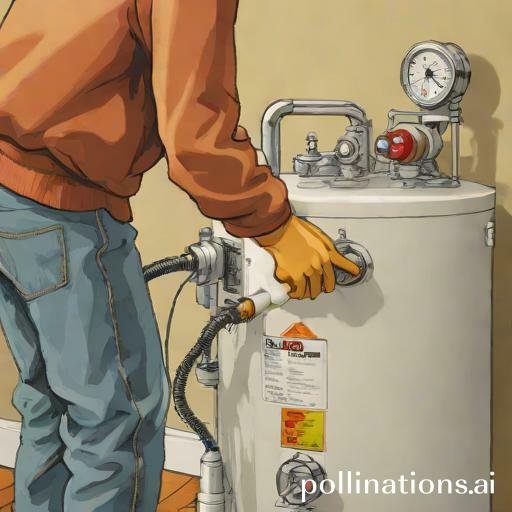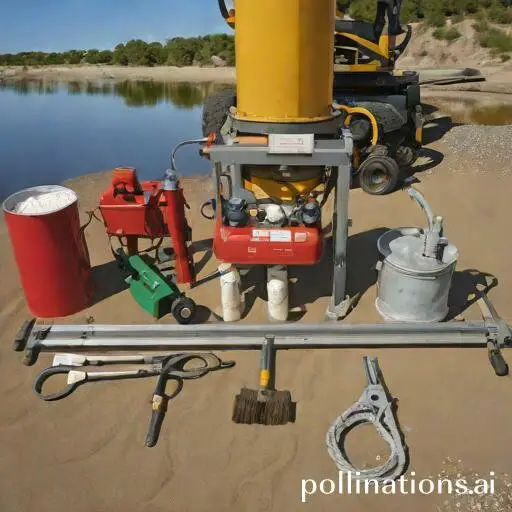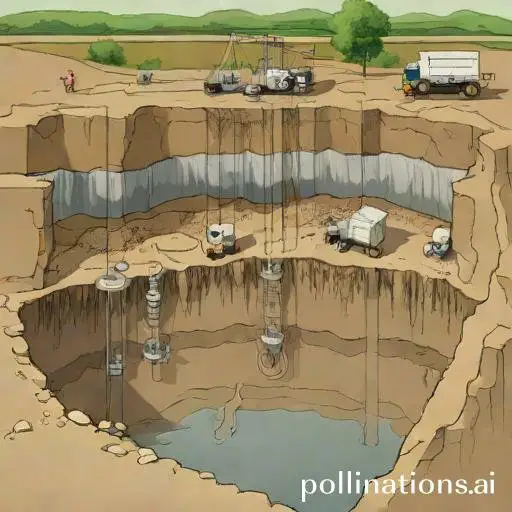
Regular sediment maintenance in water heaters is essential for optimal performance and longevity. By removing sediment buildup, you can prevent clogs and improve energy efficiency.
Neglecting this maintenance can lead to decreased water flow, increased energy consumption, and even premature failure of the water heater. Regular sediment maintenance not only ensures hot water is readily available, but also extends the lifespan of the appliance, saving you money in the long run.
Don’t overlook the importance of this simple yet crucial task for your water heater’s performance and efficiency.
Signs of sediment buildup in water heaters
Water heaters are an essential appliance in households, providing us with the comfort of hot water for various purposes. Over time, although, sediment buildup can occur in water heaters, leading to several issues that may affect their performance and efficiency. By being aware of the signs of sediment buildup, you can take proactive measures to address the problem and ensure the optimal functioning of your water heater.
1. Decreased hot water supply
One of the primary indicators of sediment buildup in water heaters is a decrease in the hot water supply. As sediment accumulates at the bottom of the tank, it takes up valuable space, reducing the volume of hot water that can be stored. This can result in shorter showers, inadequate hot water for household chores, and overall inconvenience.
2. Strange noises from the water heater
If you start hearing unusual noises coming from your water heater, such as popping or banging sounds, it could be a sign of sediment buildup. As water heats up and flows through the sediment layer, it creates pockets of air that burst, causing these noises. Ignoring these sounds may lead to more significant issues, such as damage to the tank or components.
3. Discolored water
Sediment accumulation in water heaters can also result in discolored water. If you notice rusty or muddy water coming out of your taps, it is likely that sediment has built up in the tank. This can not only affect the quality of your water but also stain your clothes and fixtures. Essential to address this issue promptly to prevent further sediment buildup and potential damage to your plumbing system.
4. Increased energy bills
Sediment buildup in water heaters can lead to decreased efficiency, causing your energy bills to rise. As sediment accumulates, it acts as an insulating layer, making it harder for the heating elements to transfer heat to the water. This forces your water heater to work harder and consume more energy to achieve the desired temperature. By acknowledging sediment buildup, you can improve the efficiency of your water heater and lower your energy costs.
Regular maintenance and flushing of your water heater can help prevent sediment buildup and prolong its lifespan. Consult your manufacturer’s guidelines or seek professional assistance to ensure the proper cleaning and maintenance of your water heater.
| Signs of Sediment Buildup | Possible Causes |
|---|---|
| Decreased hot water supply | Sediment accumulation at the bottom of the tank |
| Strange noises from the water heater | Air pockets forming and bursting in the sediment layer |
| Discolored water | Sediment mixing with the water supply |
| Increased energy bills | Decreased efficiency due to insulating sediment layer |
How to Perform Regular Sediment Maintenance
Regular sediment maintenance is crucial for the optimal functioning of your water heater. By complying with these simple steps, you can ensure that your water heater operates efficiently and lasts longer.
1. Turn off the Power Supply
Step 1: Before starting any maintenance work, it is essential to turn off the power supply to the water heater. This will prevent any accidents or electrical mishaps.
2. Drain the Water Heater
Step 2: Next, you need to drain the water heater to remove any sediment buildup. This sediment can accumulate over time and affect the performance of your water heater.
3. Flush the Water Heater Tank
Step 3: Once the water heater is drained, it’s time to flush the tank. This process involves removing any remaining sediment by filling the tank and then draining it again.
4. Refill the Water Heater Tank
Step 4: After flushing the tank, you can refill it with fresh water. Make sure to follow the manufacturer’s instructions for the proper water level.
5. Turn the Power Supply Back On
Step 5: Finally, you can turn the power supply back on and let the water heater heat the fresh water. This will ensure that you have hot water available for your daily needs.
Tools required for sediment maintenance
In regard to maintaining sediment, having the right tools is crucial. With the right equipment, you can ensure that your sediment stays clean and free from debris. Here are the essential tools you will need:
1. Garden hose
A garden hose is an indispensable tool for sediment maintenance. It allows you to easily wash away dirt and debris that may have accumulated over time. With a strong water flow, you can effectively clean your sediment and keep it looking fresh.
2. Bucket
A bucket is another essential tool for sediment maintenance. It provides a convenient way to collect and dispose of any debris or sediment that you remove. With a sturdy bucket, you can ensure that the sediment removal process is efficient and organized.
3. Screwdriver
A screwdriver is a versatile tool that can come in handy during sediment maintenance. It can be used to remove any screws or fasteners that may be holding sediment in place. With a reliable screwdriver, you can easily disassemble and clean your sediment.
4. Gloves
Protecting your hands is important when dealing with sediment maintenance. Gloves provide a barrier between your skin and any potentially harmful substances that may be present. With a good pair of gloves, you can work confidently and safely.
5. Safety goggles
Your eyes are vulnerable during sediment maintenance, so it’s essential to wear safety goggles. They protect your eyes from any flying debris or splashes that may occur. With proper eye protection, you can avoid any potential injuries and work with peace of mind.

Frequency of Sediment Maintenance
1. Recommendations from Manufacturers
Touching on maintaining the quality of your sediment, manufacturers highly recommend a regular cleaning schedule. By maintaining their guidelines, you can ensure that your sediment remains in optimal condition, providing you with the best performance and longevity.
2. Factors that Affect Frequency
The frequency of sediment maintenance can vary depending on several factors. These factors include the type of sediment, the level of usage, and the environmental conditions in which it is used. Imperative to consider these factors and adjust your maintenance schedule accordingly to ensure the continued effectiveness of your sediment.
3. Signs that Indicate the Need for Maintenance
- Decreased performance: If you notice a decline in the performance of your sediment, it may be a sign that it requires maintenance. Sediment that is not regularly cleaned can become clogged and less efficient in filtering out impurities.
- Unpleasant odor or taste: A noticeable odor or an unusual taste in your water can indicate the presence of accumulated sediment. Regular maintenance can help prevent these issues and ensure that your water remains fresh and clean.
- Visible debris: If you see visible debris or sediment particles in your water, it is a clear indication that your sediment needs immediate attention. Ignoring this sign can lead to further contamination and potential damage to your water system.
| Factors | Frequency |
|---|---|
| Type of sediment | Varies |
| Level of usage | Regularly |
| Environmental conditions | Adapt accordingly |

Benefits of regular sediment maintenance
Regular sediment maintenance is crucial for the proper functioning and longevity of your water heater. By taking the time to regularly clean and remove sediment buildup, you can enjoy a range of benefits that will ultimately save you time and money in the long run.
Prolonged lifespan of the water heater
One of the key benefits of regular sediment maintenance is the prolonged lifespan of your water heater. Sediment buildup can cause corrosion and damage to the heating elements, leading to premature failure. By removing the sediment regularly, you can ensure that your water heater operates efficiently and lasts for many years to come.
Improved energy efficiency
When sediment accumulates in your water heater, it acts as an insulator, making it harder for the heating elements to transfer heat to the water. This can result in increased energy consumption and higher utility bills. Regular sediment maintenance helps to improve energy efficiency by keeping the heating elements clean and allowing them to operate at their full capacity.
Reduced risk of leaks and water damage
Sediment buildup can also lead to leaks and water damage in your water heater. As sediment accumulates, it can cause pressure buildup and weaken the tank, increasing the risk of leaks and potential water damage to your property. By regularly removing sediment, you can reduce the risk of leaks and ensure the safety of your home.
Improved water quality
Another benefit of regular sediment maintenance is improved water quality. Sediment can contain various contaminants and impurities that affect the taste and smell of your water. By removing the sediment, you can enjoy cleaner and fresher-tasting water for drinking, cooking, and other household activities.
Cost savings in the long run
To summarize, regular sediment maintenance offers a range of benefits, including a prolonged lifespan of your water heater, improved energy efficiency, reduced risk of leaks and water damage, improved water quality, and cost savings in the long run. By prioritizing sediment maintenance, you can ensure the optimal performance and longevity of your water heater, ultimately saving you time, money, and hassle.
| Benefit | Description |
|---|---|
| Prolonged lifespan of the water heater | Regular sediment maintenance helps prevent corrosion and damage to the heating elements, extending the lifespan of the water heater. |
| Improved energy efficiency | By removing sediment buildup, the water heater can operate more efficiently, reducing energy consumption and utility bills. |
| Reduced risk of leaks and water damage | Regular sediment maintenance decreases the likelihood of pressure buildup and tank weakening, minimizing the risk of leaks and water damage. |
| Improved water quality | Removing sediment leads to cleaner and better-tasting water for various household activities. |
| Cost savings in the long run | Investing in sediment maintenance can result in long-term cost savings by reducing energy consumption and avoiding expensive repairs or replacements. |
Bottom Line
Regular sediment maintenance in water heaters is crucial for ensuring their longevity and efficiency. Neglecting this task can lead to a host of problems, including reduced hot water supply, increased energy bills, and even damage to the tank itself. By flushing out sediment buildup at least once a year, homeowners can prevent these issues and extend the lifespan of their water heater. Additionally, regular maintenance can improve water quality and reduce the risk of bacterial growth. In the course of it may seem like a small task, sediment maintenance is an important part of home maintenance that should not be overlooked.
Overall, investing a little time and effort into sediment maintenance can save homeowners money and hassle in the long run. By making it a regular part of their home maintenance routine, they can ensure that their water heater is running smoothly and efficiently for years to come.
Read More:
1. Impact Of Sediment On Water Heater Efficiency
2. Chemical Solutions For Sediment Removal In Water Heaters










